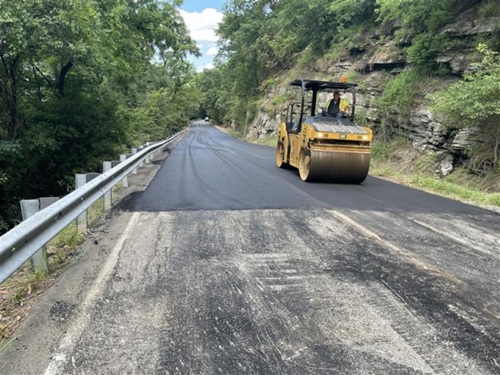Eight states – Iowa, Indiana, Kansas, Kentucky, Michigan, Minnesota, Ohio, and Wisconsin – have officially launched a truck parking information management system or TPIMS to help truck drivers more easily locate available commercial vehicle parking spaces at both state-run rest areas and select private truck stops around the Midwest.
[Above photo via Wikimedia Commons]
The system, called “Trucks Park Here,” collects truck parking availability data using a variety of in-pavement and parking lot entrance/exit sensors and is being funded in part through a $25 million federal grant issued under the former Transportation Investment Generating Economic Recovery or TIGER program, renamed last April the Better Utilizing Investments to Leverage Development or BUILD grant program.
However, Phil Mescher, with the Iowa Department of Transportation’s office of systems planning, noted in a statement Jan. 7 that each state involved in this effort is displaying truck parking availability information in different ways.
“All eight states have worked to make the data showing available truck parking consistent; however, each is taking a little different approach on where the data is displayed,” he explained. “While some states are using more sign-based approaches like placing information on digital message boards on the roadway, in Iowa we decided to take a more technology-based approach. We are making information available to those who can use the data in existing in-cab systems or develop apps for drivers. In addition, we thought it was important to provide the information on our existing 511 traveler information site that many Iowa drivers are already using.”

The Minnesota Department of Transportation said it has installed this truck parking location technology at six rest areas in the state, with a seventh expected to go online next spring.
Minnesota DOT’s technology collects and broadcasts real-time information to dynamic message signs along the Interstate 35 and I-94 freight corridors to alert truck drivers about the number of available parking spaces ahead noted Dan Rowe, state project manager for this effort, in a statement on Jan. 4. The agency noted it received $1.2 million from the TIGER grant to fund this effort and contributed another $177,500 to the project.
[TPIMS resulted from several years of development and testing on the part of several DOTs, universities, research organizations, and private companies. The video below examines some of the work the Minnesota DOT conducted to develop its part of the system.]
Truckers and dispatchers can also access the information on the 511 traveler information system and smart phone applications, he added, with the 511 system to include a text and email notification feature that will become available in mid-January.
“This technology makes the regional freight corridor system safer and more efficient,” Rowe said. “Drivers can plan their routes better and make safer, smarter parking decisions. Truckers often spend an hour or more looking for safe parking. They end up parking in illegal and unsafe places such as ramps and shoulders.”

“Truck drivers are vital to our economy [and] one of the biggest challenges they face is finding a safe place to park and rest,” stressed Ohio Department of Transportation Director Jerry Wray in a statement on Dec. 26. “This system will help truck drivers plan ahead and allow them to stop wasting precious driving minutes searching for parking.”
He said Ohio received the largest share of the TIGER grant for the TPIMS project – $5.3 million – and contributed another $787,000 in state funds to bring the total investment to $6.1 million.
The Ohio DOT noted a 2013 survey found that 83 percent of truck drivers routinely take over 30 minutes to find parking. By using the new TPIMS technology, the agency said truck drivers can monitor parking availability and make better-informed parking decisions as they near the limit of the their federally mandated hours of service.
The Ohio DOT added that the search for safe, convenient parking annually costs the country $4.4 billion in fuel, lost productivity, etc. The TPIMS is expected to help generate more than $403 million in benefits through the life of the project, in part by reducing fuel consumption and wasted time as well as by decreasing the number of non-routine maintenance repairs on highway shoulders and ramps due to illegal truck parking.
 Nation
Nation


